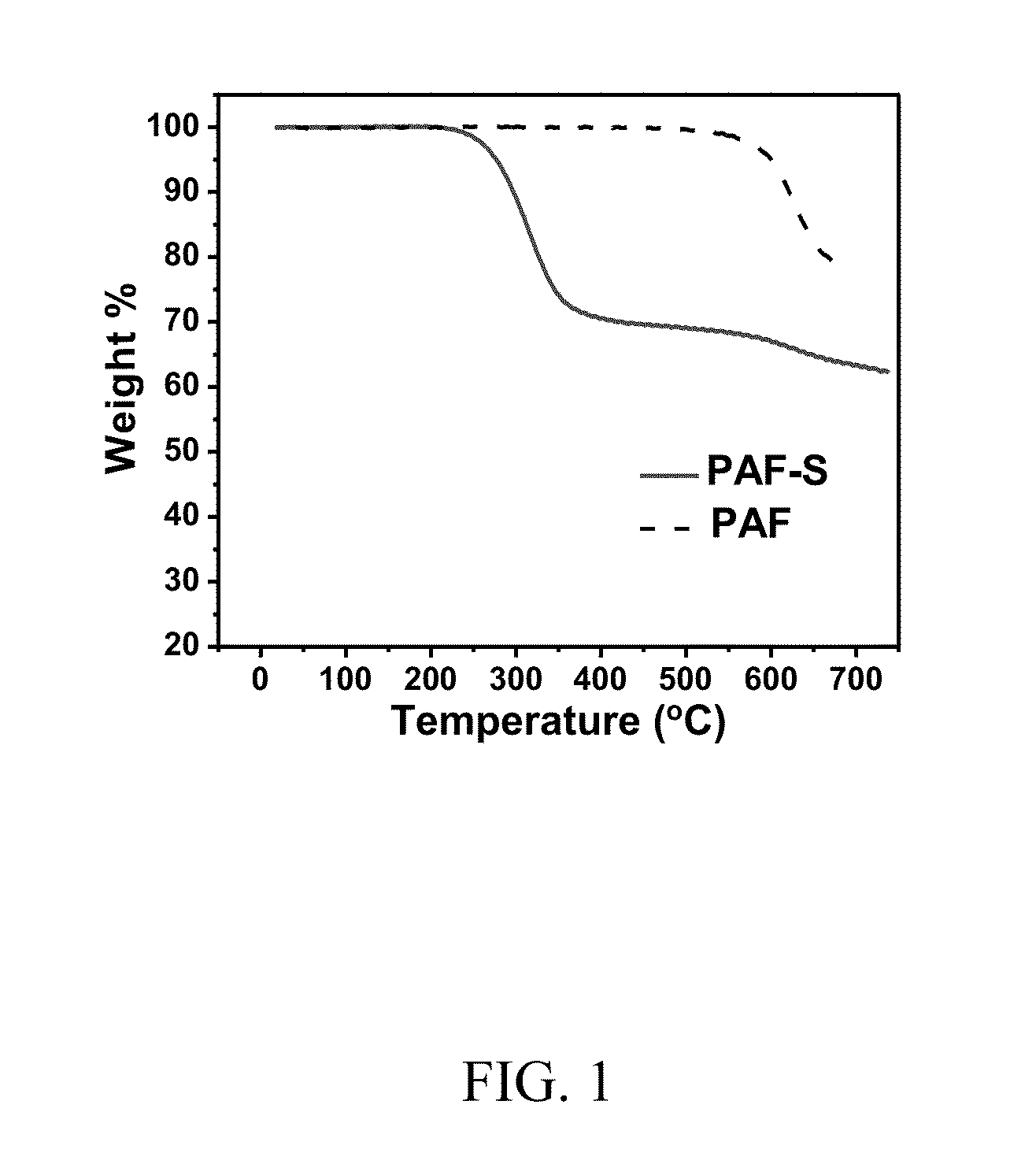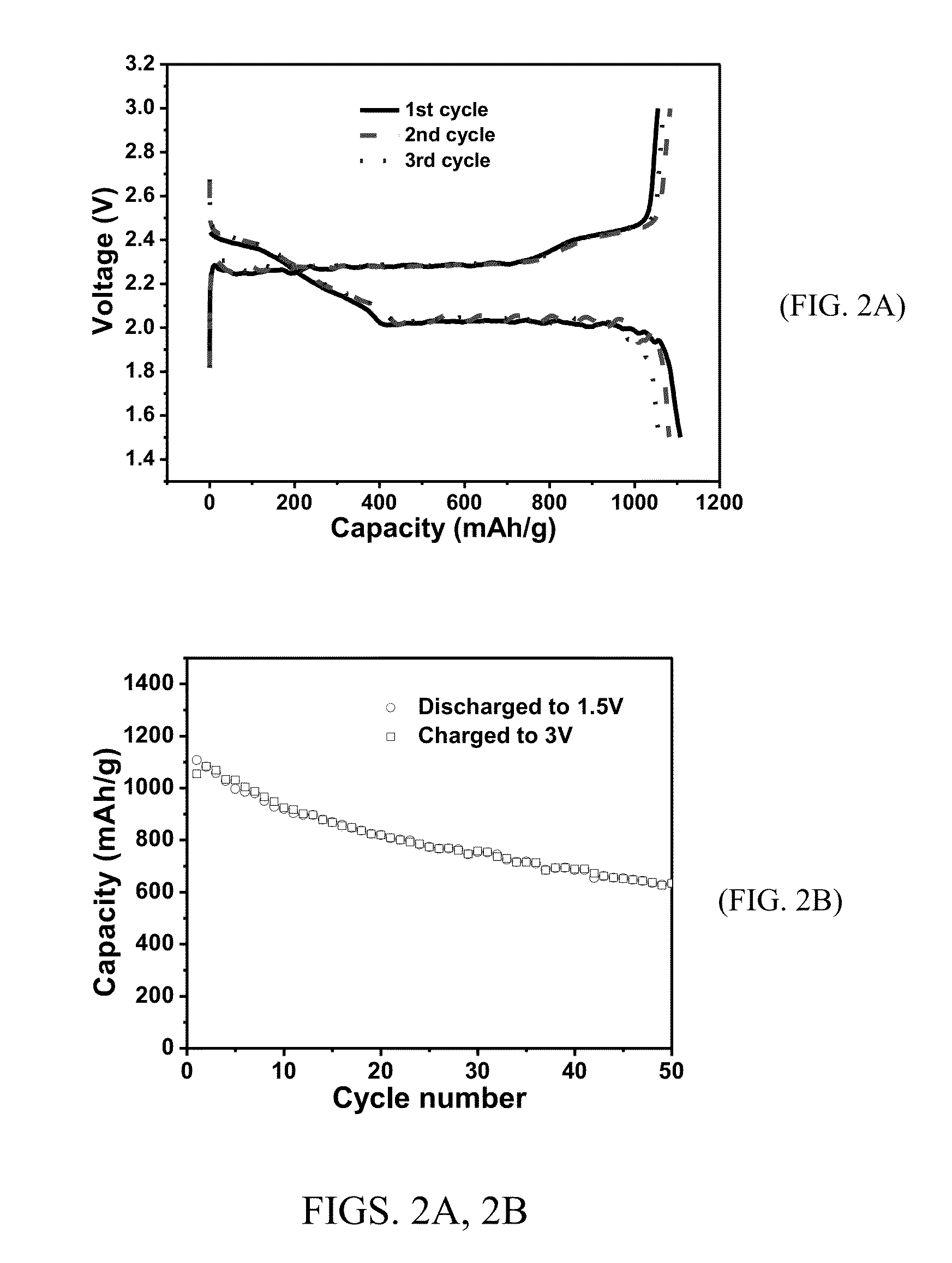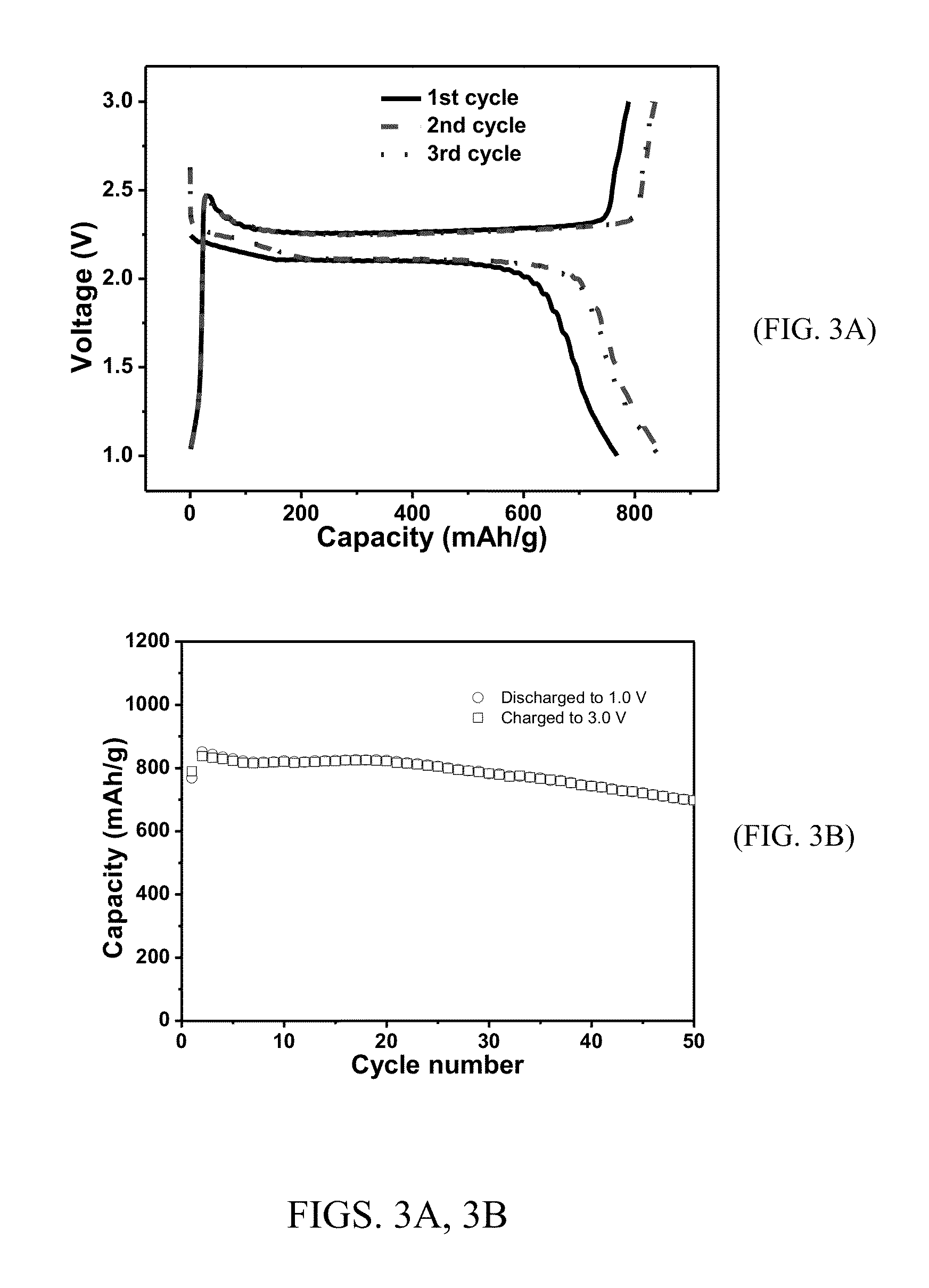Nitrogen-sulfur-carbon nanocomposites and their application as cathode materials in lithium-sulfur batteries
a lithium-sulfur battery and carbon nanocomposite technology, applied in the direction of positive electrodes, cell components, electrochemical generators, etc., can solve the problems of low utilization rate of active materials in the cathode, poor electrochemical contact of sulfur, and the low implementation of the lithium-sulfur system in high-power applications. , to achieve the effect of improving the initial discharge capacity, cycling performance, and usable lifetim
- Summary
- Abstract
- Description
- Claims
- Application Information
AI Technical Summary
Benefits of technology
Problems solved by technology
Method used
Image
Examples
example 1
Preparation and Analysis of PAF-S, an SN-doped Electron-Conducting Polymer Electroactive Microporous Organic Molecular Sieve
Synthesis of PAF-S
[0103]The synthesis and characterization of the precursor, PAF, is disclosed in J. Mater. Chem., 2011, 21, 18208-18214. PAF-S was prepared by grounding PAF powder (0.1 g) and sulfur (0.5 g) together, followed by heating at 155° C. for 12 h in a sealed vessel. The composite was then heated to and kept at 300° C. for 1 hour under argon to evaporate the surface sulfur.
Characterization of PAF-S
[0104]FIG. 1 shows the TGA curves of pure PAF and its sulfur composite PAF-S. The carbon yield of pure PAF-S at 700° C. was found to be 78%. The sulfur content within the composite after heat treatment at 300° C. was found to be 30 wt %.
Composite Preparation and Electrode Assembly Using PAF-S
[0105]The sulfur electrode was made by casting a well-homogenized slurry of PAF-S (65 wt %), carbon black (20 wt %), and PVdF (15 wt %) in NMP on aluminum foil using a d...
example 2
Preparation and Analysis of SN-Doped Mesoporous Carbon
Synthesis of SN-Doped Mesoporous Carbon
[0107]Mesoporous carbon was synthesized by carbonization of a nanostructured polymeric composite that was obtained by self-assembly of a block copolymer (i.e., Pluronic® F127) and phenol resin (i.e., phloroglucinol-formaldehyde) under acidic conditions via a soft-template method (Advanced Materials, 2011, 23, 3450-3454). In a typical synthesis, phloroglucinol (26.2 g), F127 (EO106-PO70-EO106, BASF, 52.4 g), and aqueous HCl (10.0 g, 37 wt %) in ethanol (1.3 L, 200 proof) were charged into a 2 L flask. The mixture was heated to reflux under stirring before an aqueous formaldehyde solution (26.0 g, 37 wt %) was added. The reaction was continued for two hours and filtered. Yellow polymer particles on the filter were washed with ethanol and dried in an oven at 120° C. for three hours. The carbonization was conducted under nitrogen gas flow in a tubular furnace by heating the polymer particles to ...
example 3
Preparation and Analysis of S / N-Doped Mesoporous Carbon Admixed with Carbon Nanotube (CNT), i.e., “CNT-Mesoporous Carbon”
Synthesis of CNT-Mesoporous Carbon
[0112]In this example, 10 wt % of carbon nanotube was added to nitrogen-doped mesoporous carbon, and this used to prepare the sulfur composite. CNT-Mesoporous carbon was prepared via self-assembly of block copolymer and phloroglucinol-formaldehyde resin under acidic conditions. In a typical synthesis, a 2 L flask was charged with 26.2 g of phloroglucinol, 52.4 g of Pluronic® F127, (EO106-PO70-EO106, BASF), 10.0 g of aqueous HCl (37 wt %) and 2 g of carbon nanotubes (CNT) in 1300 mL of ethanol (200 proof). The mixture was heated to reflux with stirring. To this solution, 26.0 g of formaldehyde aqueous solution (37 wt %) was added. The reaction mixture was stirred for two hours and then filtered. The obtained polymer particles were washed with ethanol and dried in an oven at 120° C. for 3 hours. Carbonization was conducted under a n...
PUM
| Property | Measurement | Unit |
|---|---|---|
| conductivity | aaaaa | aaaaa |
| pore size | aaaaa | aaaaa |
| size | aaaaa | aaaaa |
Abstract
Description
Claims
Application Information
 Login to View More
Login to View More - R&D
- Intellectual Property
- Life Sciences
- Materials
- Tech Scout
- Unparalleled Data Quality
- Higher Quality Content
- 60% Fewer Hallucinations
Browse by: Latest US Patents, China's latest patents, Technical Efficacy Thesaurus, Application Domain, Technology Topic, Popular Technical Reports.
© 2025 PatSnap. All rights reserved.Legal|Privacy policy|Modern Slavery Act Transparency Statement|Sitemap|About US| Contact US: help@patsnap.com



